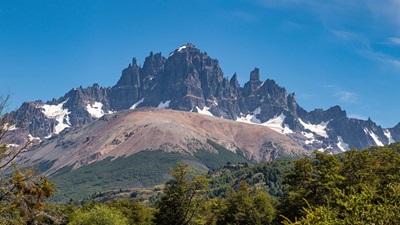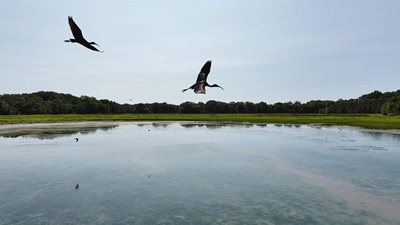Colorado Moves to Restore Water Safeguards After Federal Rollback
Regulation would protect rivers, wetlands, economy, and communities

In Colorado, as in much of the U.S. West, clean fresh water is a scarce and valuable resource. So, in 2024, a year after the U.S. Supreme Court weakened decades-old federal safeguards affecting an estimated 60% of the state’s wetlands, Colorado policymakers passed a bipartisan law to ensure continued protection of those places, which supply clean drinking water, support the state’s vibrant outdoor recreation economy, and safeguard communities from drought and wildfire.
Now the Colorado Water Quality Control Commission is crafting a regulation to implement and enforce that law. Coloradans have an opportunity to ensure that the agency does so with strong, durable measures to protect the state’s abundant and clean waterways.
They can voice their opinion on the issue by:
- Signing a petition through Nov. 23.
- Emailing comments through Nov. 25 to [email protected].
- Attending a Dec. 8 public hearing before the commission in person or on Zoom.
The backstory
The 2023 Supreme Court decision, Sackett v. Environmental Protection Agency, limited the scope of the 1972 federal Clean Water Act. For Colorado, the ruling put thousands of miles of streams and rivers, and tens of thousands of acres of wetlands, at risk of pollution, development, and other harm.
The law that Colorado passed in response requires the nine-member Water Quality Control Commission to create a new regulation, known as Regulation 87, to protect many of the state’s most sensitive wetlands and streams from pollution and degradation and provide regulatory certainty for businesses and individuals seeking to develop property.
The advocates
“Water is Colorado’s most precious resource by a long shot, and we have a lot of reasons to be fearful about the future of the state’s waters, both from quality and quantity perspectives,” said state Senator Dylan Roberts, a lead co-sponsor with Senator Barbara Kirkmeyer, House Speaker Julie McCluskie, and Representative Karen McCormick of the legislation that created Regulation 87. “Following the Supreme Court decision, it was of utmost importance to me to … do whatever we could to strengthen the protections we have in the state.”
After the Sackett ruling, Roberts worked with other lawmakers and state agencies, agricultural representatives, Tribes, environmental advocates, and community leaders to craft the 2024 law, and he now favors a robust follow-through by the commission.
The next critical step
By enacting a strong regulation, the commission would help:
- Protect drinking water. About 3.7 million Coloradans rely on the state’s streams for at least some of their drinking water. As a headwater state, Colorado also supplies water to 18 additional states that are home to more than 40 million people.
- Bolster “nature-based” defenses against increasing wildfires and floods. From 1980 to 2024, Colorado experienced 76 weather/climate disasters with losses of more than $1 billion each, including two floods, 42 severe storms, and 12 wildfires. Healthy wetlands buffer communities from severe storms, absorb floodwaters, and help block the spread of wildfires.
- Sustain the state’s outdoor recreation economy and opportunities. Colorado’s recreation economy generates $37 billion in consumer spending annually and directly supports 511,000 jobs. In addition, 72% Coloradans participate in outdoor recreation at least weekly, and 80% say it represents an important part of their personal well-being.
- Conserve wildlife habitat. The state is home to almost 1,000 species, from bighorn sheep, elk, and lynx to rainbow trout and walleye. Hunting and fishing generate more than $3.25 billion annually in Colorado, supporting local businesses across all 64 counties.
- Capture and store climate-warming carbon. Fens—groundwater-fed wetlands—cover a tiny fraction of the state but help to lock away hundreds of tons of climate-warming carbon per acre, making them powerful natural climate allies.
With strong implementation of this regulation, Colorado would become the first state after the Sackett decision to establish strong, enforceable rules that protect the rivers, wetlands, and drinking water that its people treasure. Residents should urge the commission to restore protections that have served Coloradans, their outdoor environment, and economy so well for more than 50 years.
Carrie Sandstedt is a senior officer and Alex Clayton Moya is an officer with The Pew Charitable Trust’s U.S. conservation project.










